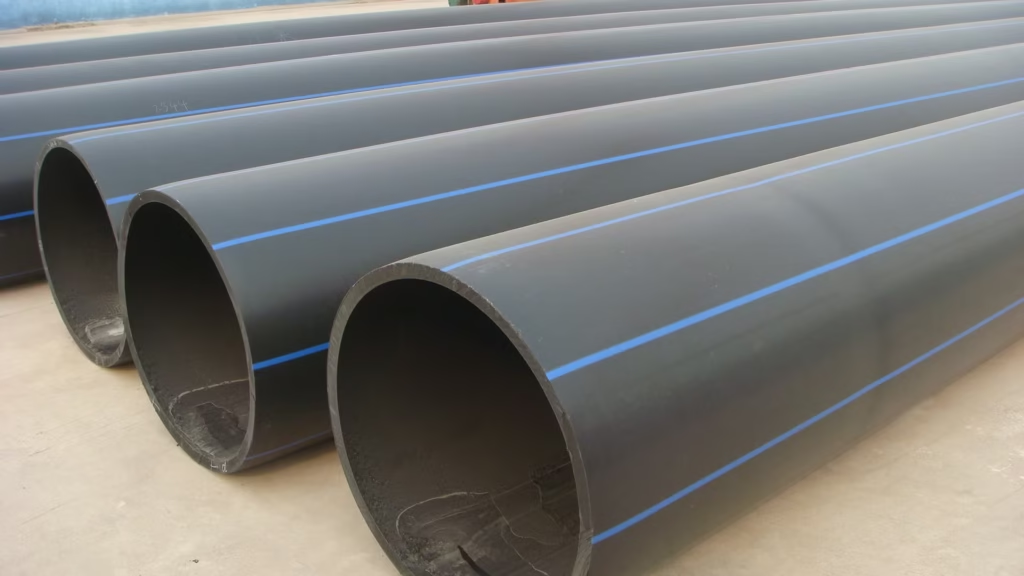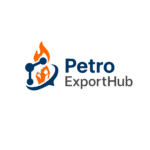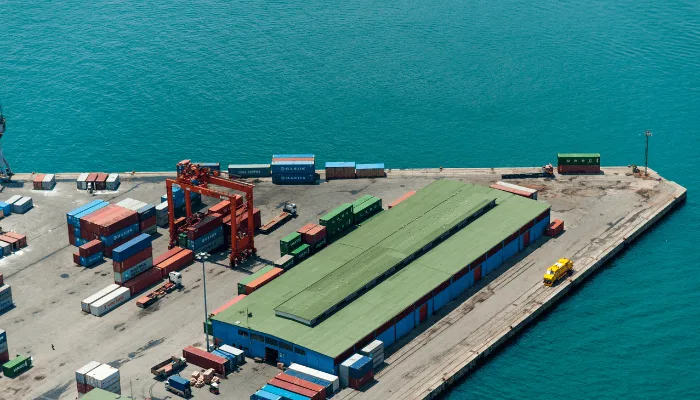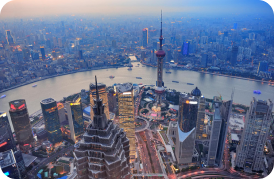
Why Iran’s HDPE (PE100) Pipes Lead the Market in Price & Quality
Iran’s petrochemical sector is one of the most dynamic in the Middle East, and HDPE (PE100) products have become a flagship export commodity. Thanks to vast natural resources, advanced manufacturing facilities, and an advantageous geographical position, Iranian exporters are able to offer hdpe pe100 pipe and pe100 pe80 products at prices that are highly competitive in regional markets, without sacrificing quality.
In this comprehensive analysis, we’ll explore the economic, logistical, and quality-based factors that make Iran’s HDPE (PE100) stand out, along with its role in the global supply chain.
1. Abundant Feedstock and Lower Production Costs
The advantages that Iran has over importaing services begins it’s with untapped reserves of natural gas which can be processed into ethylene, the raw matieral used to produce HDPE PE100. Because Iranian manufacturers get ethylene domestically, it greatly advantages them.
Lower input costs compared to producers in Europe or East Asia.
Stable pricing unaffected by global feedstock shortages.
Predictable production schedules that reduce lead time for clients.
In addition, energy prices in Iran are lower than in many competing nations, significantly reducing operational expenses. This allows exporters to maintain attractive pricing on hdpe pe 100 pipe specifications-compliant products while still achieving healthy profit margins.
2. Scale and Efficiency of Manufacturing
Iran has invested heavily in large-scale petrochemical complexes that manufacture HDPE (PE100) products in large quantities.
Operate continuously, ensuring year-round supply.
Employ modern extrusion and molding technologies for hdpe pe100 pipe and related products.
Maintain efficient quality control systems, adhering to pe100 pe80 standards for various applications.
High-capacity plants mean Iran can handle bulk orders for infrastructure projects such as water distribution, gas supply networks, and industrial pipelines, all while keeping per-unit costs low.
3. Competitive Pricing Strategies
Pricing is a decisive factor in regional markets. Iranian exporters leverage their cost advantages to offer hdpe pe100 pipe and pe100 pe80 grades at rates often 10–20% lower than Turkish or Eastern European suppliers.
The pricing advantage stems from:
Reduced raw material costs.
Lower labor costs while maintaining skilled production staff.
Government incentives that encourage petrochemical exports.
Access to hdpe pe 100 pipe specifications production lines that reduce waste and improve efficiency.
Such flexibility in pricing enables Iranian exporters to respond swiftly to shifts in the market and provides them the opportunity to make offers even in the most unstable times.
4. Diversified and Strategic Logistics
Iran is strategically situated such that it has access to a number of export routes:
Southern Ports: Bandar Abbas and Imam Khomeini Port provide direct shipping lanes to India, Southeast Asia, and Africa.
Overland Corridors: Road and rail networks link Iran to Turkey, the Caucasus, Central Asia, and Europe.
Multimodal Transport: Combining road, rail, and sea shipments for flexible delivery solutions.
Exporters can ensure that hdpe pe 100 pipes arrive on schedule by minimizing shipping costs and reducing transit times through proper hdpe pe 100 pipes logistics channel diversification. This kind of business reliability strengthens long-term trade relations.
5. Compliance with International Standards
Buyers often prioritize suppliers who can demonstrate adherence to recognized quality benchmarks. Iranian HDPE (PE100) products are manufactured according to ISO, EN, and other international standards.
Clients purchasing hdpe pe100 pipe can expect:
High resistance to internal pressure.
Excellent performance in harsh climates.
Long service life (often exceeding 50 years in water and gas networks).
For projects that require mixed material usage, Iran also produces pe100 pe80 grades, offering flexibility without compromising quality. Compliance with hdpe pe 100 pipe specifications ensures compatibility with global infrastructure requirements.
6. Adaptability to Market Trends
The petrochemical industry is highly sensitive to shifts in demand, trade policies, and commodity prices. Iranian producers have shown adaptability by:
Expanding product lines to include a variety of diameters and pressure ratings for hdpe pe100 pipe.
Offering both pe100 pe80 products to suit different budgets and project scopes.
Developing partnerships with logistics providers to secure shipping routes during disruptions.
This adaptability has enabled Iran to maintain its foothold in key markets, even during global supply chain challenges.
7. Strong Presence in Regional Markets
Iran’s HDPE (PE100) exports are in high demand in:
Turkey: Due to proximity, shared logistics routes, and competitive pricing.
India: A growing market for water and gas infrastructure.
Central Asia and the Caucasus: Benefiting from overland transport and shorter delivery times.
Africa: Leveraging competitive pricing and bulk shipment capabilities.
Exporters often emphasize compliance with hdpe pe 100 pipe specifications when entering new markets, ensuring smooth approval in infrastructure tenders.
Conclusion
Iran’s position as a cost-competitive supplier of HDPE (PE100) is the result of:
Abundant, low-cost raw materials.
Efficient, large-scale production facilities.
Strategic logistics routes across land and sea.
Commitment to hdpe pe100 pipe quality and pe100 pe80 versatility.
Adherence to hdpe pe 100 pipe specifications that meet international standards.
For buyers seeking affordable yet high-quality materials for infrastructure projects, Iran’s HDPE (PE100) offers a compelling balance of price, performance, and reliability — making it a preferred choice in regional markets.

Cost Advantage – Low feedstock and energy costs keep prices highly competitive.
High-Quality Standards – Products meet ISO, EN, and hdpe pe 100 pipe specifications.
Efficient Logistics – Multiple export routes ensure timely delivery.
Product Range – Availability of both hdpe pe100 pipe and pe100 pe80 for different project needs.
Ready to import HDPE P100 from Iran ?
- At PetroExportHub, we connect you with trusted Iranian HDPE suppliers ready for fast export.
- Info@PetroExportHub.com

1 comment on “Why Iran’s HDPE (PE100) Pipes Lead the Market in Price & Quality”
YourComment Cancel reply
Related posts
Mono Ethylene Glycol (MEG) serves as a cornerstone for modern antifreeze and coolant formulations, offering reliable freezing protection and heat resi . . .
Explore Solvent 100’s specs, uses, and export opportunities from Iran. Ideal for paint, ink, and adhesive buyers in India, Turkey, UAE, and Africa. . . .
Explore everything you need to know about exporting sulphur from Iran in 2024 — including types, packaging, documents, ports, prices, and top import . . .
Explore Iran’s top ports for petrochemical exports, including Bandar Imam Khomeini, Assaluyeh, and Bandar Abbas. Compare infrastructure, accessibili . . .
Learn the key differences between polypropylene (PP) and polyethylene (PE), their applications, advantages, and how to choose the right polymer for yo . . .
Discover how a Turkish plastics manufacturer reduced costs by 22% through importing HDPE from Iran. Real-world case study by PetroExportHub. . . .
Learn why Iran is a leading exporter of polyethylene (PE). Discover grades, global applications, and how PetroExportHub connects buyers with top suppl . . .
We are here to answer your questions....
Petro Export Hub
PetroExportHub specializes in the export of premium-grade petrochemicals, minerals, and industrial chemicals from Iran, serving international markets with reliability, transparency, and tailored logistics solutions
Tehran Office
Phone:
0214865484 | +989127607241
Address:
Tehran..
China Office
TEL :
0211400
Address:
Zhongzhou Bie Lu, Zhongcheng Street, Yiwu City, Zhejiang Province, China
Quick Access
Quick Access
- Contact Our Sales Team
- Frequently Questions
- Shipping & Logistics
- Become a Partner
- Certificatins & Quality








prices and shifting trade policies to emerging infrastructure demands in developing economies. For hdpe pe100 pipe suppliers in Iran, these changes are not obstacles but opportunities to innovate and strengthen